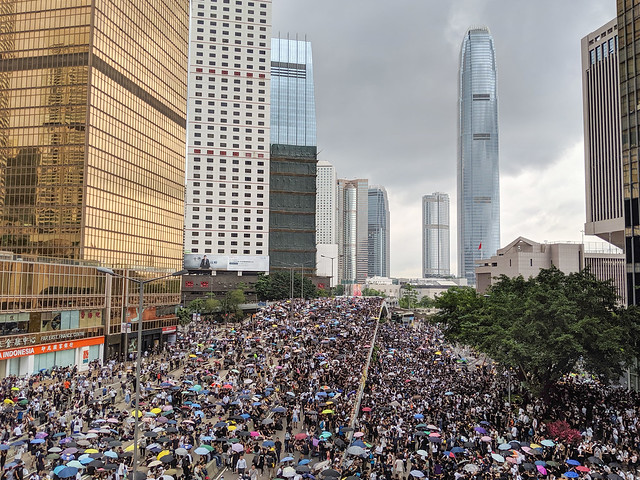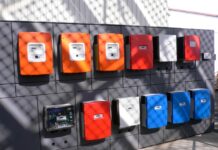UPDATE: According to reports, the Hong Kong government is going to announce the withdrawal of the controversial extradition bill. Chinese newspapers are reporting this is “a gesture… to cool down the atmosphere”
The video has gone viral. A sobbing white woman saying live on television: “I came from South Africa to move away from this… I don’t want this. This is not the Hong Kong I’ve grown to love.” The Daily Vox rounds up what is happening in Hong Kong.
Elaine Yu, a journalist reporting on the Hong Kong (HK) protests interviewed the woman who knelt in front of riot police firing tear gas at protesters. The woman told Yu the protests “really hurt her”. She went on to say she would rather move back to South Africa if this was what she would have to live with for the next few years. The video has garnered much outrage from people around the world and in South Africa, especially for the way the woman seems to center her personal experiences of the protests. So exactly are people in Hong Kong protesting about?
The Bill
The protests in Hong Kong started in June. Protesters took to the streets against the signing of an extradition bill. The HK government proposed it after a Hong Kong man committed a crime in Taiwan. He couldn’t go to trial in Hong Kong for the crime and couldn’t be extradited to Taiwan because there were no extradition laws. The bill would mean extradition for Hongkongers to China as well.
Hong Kong is a Special Administrative Region of the People’s Republic of China. Formerly a British colony, the territory transferred to China in 1997. Britain gave it back to China with the special agreement “One Country, Two Systems.” Being a special administrative region, HK has governing and economic systems separate from mainland China.
Hongkonger fears the bill would target political leaders. Millions of people from the region took to the streets to show their displeasure. Police responded with high levels of violence against protesters. This prompted protesters to gear the movement towards broader pro-democracy goals. The protests are above all about the status of the special region and how much control China has over it.
What do protesters want
Carrie Lam, the territory’s chief executive suspended the bill in mid-June. Yet protesters are calling for it to be officially withdrawn. Protesters have also called for Lam to resign and for those arrested during the protests to be released. They also want “an implementation of genuine universal suffrage.” This demand relates to the fact that the leader of the region is chosen by a committee dominated by a pro-Beijing establishment rather than by direct elections.
Over the past few days, Hongkongers have taken the protests to the airports. They shut down the Hong Kong international airport. The airport authorities were forced to suspend flights. Protesters at the airport chanted “Stand with Hong Kong, fight for freedom” at the airport.
China response to the protests
The Chinese government has condemned the actions taking place in HK. Beijing has accused foreign countries including the United Kingdom and America of “fanning the fire” of unrest in the city. Footage from Chinese state media on Monday showed armored personnel and troop carriers driving to Shenzhen, which borders Hong Kong. The state media warns protesters in HK are asking for “self-destruction.”
On Monday, Chinese officials said the protesters were committing “deranged acts.” The state media has also said the People’s Army is ready to handle and “riots” and “terrorism-related acts” happening in China. However, this reaction is not isolated to the current protests. It’s part of the long term plan by the Chinese government to take over Hong Kong.
The Chinese government are waiting for the original agreement with the British to end. By 2047, Hong Kong will become a part of China. Beijing is already taking steps by arresting pro-democracy activists, and abducting booksellers from HK, therefore supposedly cementing a “smooth transition” in 2047.
The Umbrella Movement
This is not the first time people from Hong Kong have taken to the streets to voice their concerns. In 2014, thousands of students came together to protest an announcement by China of electoral reforms. There was an occupation of Hong Kong’s business centre during the protests. The 2014 protests were titled the Umbrella Movement because protesters carried umbrellas to use as a protection against the tear gas used by police.
There is no surety of a response to protesters’ demands and how China will react in the coming days. However, the protesters seem determined to hold out for justice and democracy.









